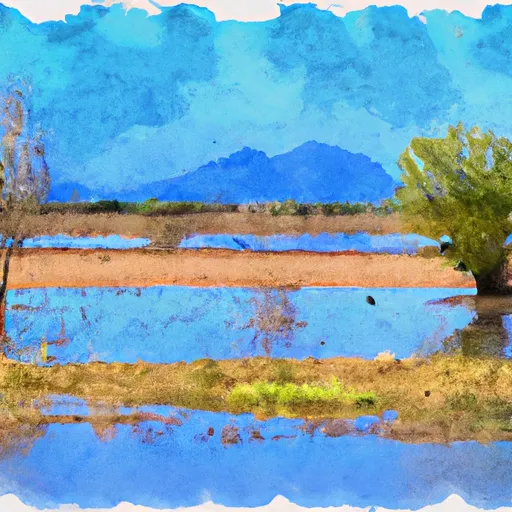Wilderness Area Chupadera
Rate this placeLast Updated: December 24, 2025
The Wilderness Area of Chupadera is located in the state of New Mexico and offers a diverse range of attractions for visitors.
°F
°F
mph
Wind
%
Humidity
Summary
Situated within the Chihuahuan Desert, this wilderness area provides a unique opportunity to experience the region's rich ecosystem and natural beauty.
One of the compelling reasons to visit Chupadera Wilderness Area is its abundant wildlife. The area is home to a variety of species, including mule deer, javelina, coyotes, and a wide range of bird species. Birdwatchers will particularly enjoy the sight of the iconic roadrunners, golden eagles, and numerous raptors soaring above the desert landscape.
A major point of interest within Chupadera is the Chupadera Mountain, from which the wilderness area derives its name. This mountain offers breathtaking panoramic views of the surrounding desert and is an excellent spot for hiking enthusiasts. The 5-mile Chupadera Mountain Trail provides a challenging yet rewarding hike, allowing visitors to explore the rugged beauty of the area.
Another noteworthy attraction in this wilderness area is the Chupadera Springs. These natural springs provide a rare oasis in the desert, supporting a diverse array of plant and animal life. Visitors can witness the fascinating contrast between the arid desert landscape and the lush vegetation surrounding the springs.
In terms of interesting facts, Chupadera Wilderness Area encompasses approximately 8,600 acres of land. This designated wilderness area is managed by the Bureau of Land Management and aims to preserve its untouched natural state. The absence of amenities and infrastructure adds to the wilderness experience, allowing visitors to immerse themselves in the serenity and solitude of the desert.
The best time to visit Chupadera Wilderness Area is during the spring or fall seasons. The mild temperatures and lower visitation rates make these seasons ideal for exploring the area. It is advisable to check weather conditions and park regulations before planning a visit, as summer temperatures can be extremely hot, and some areas may be closed during specific times of the year.
To ensure accuracy, it is recommended to verify the information across multiple independent sources, such as official park websites, travel guides, and local tourist information centers.
Weather Forecast
Park & Land Designation Reference
Large protected natural areas managed by the federal government to preserve significant landscapes, ecosystems, and cultural resources; recreation is allowed but conservation is the priority.
State Park
Public natural or recreational areas managed by a state government, typically smaller than national parks and focused on regional natural features, recreation, and education.
Local Park
Community-level parks managed by cities or counties, emphasizing recreation, playgrounds, sports, and green space close to populated areas.
Wilderness Area
The highest level of land protection in the U.S.; designated areas where nature is left essentially untouched, with no roads, structures, or motorized access permitted.
National Recreation Area
Areas set aside primarily for outdoor recreation (boating, hiking, fishing), often around reservoirs, rivers, or scenic landscapes; may allow more development.
National Conservation Area (BLM)
BLM-managed areas with special ecological, cultural, or scientific value; more protection than typical BLM land but less strict than Wilderness Areas.
State Forest
State-managed forests focused on habitat, watershed, recreation, and sustainable timber harvest.
National Forest
Federally managed lands focused on multiple use—recreation, wildlife habitat, watershed protection, and resource extraction (like timber)—unlike the stricter protections of national parks.
Wilderness
A protected area set aside to conserve specific resources—such as wildlife, habitats, or scientific features—with regulations varying widely depending on the managing agency and purpose.
Bureau of Land Management (BLM) Land
Vast federal lands managed for mixed use—recreation, grazing, mining, conservation—with fewer restrictions than national parks or forests.
Related References

 Wilderness Area Indian Well
Wilderness Area Indian Well
 Bosque Del Apache National Wildlife Refuge
Bosque Del Apache National Wildlife Refuge
 Wilderness Area San Pasqual
Wilderness Area San Pasqual